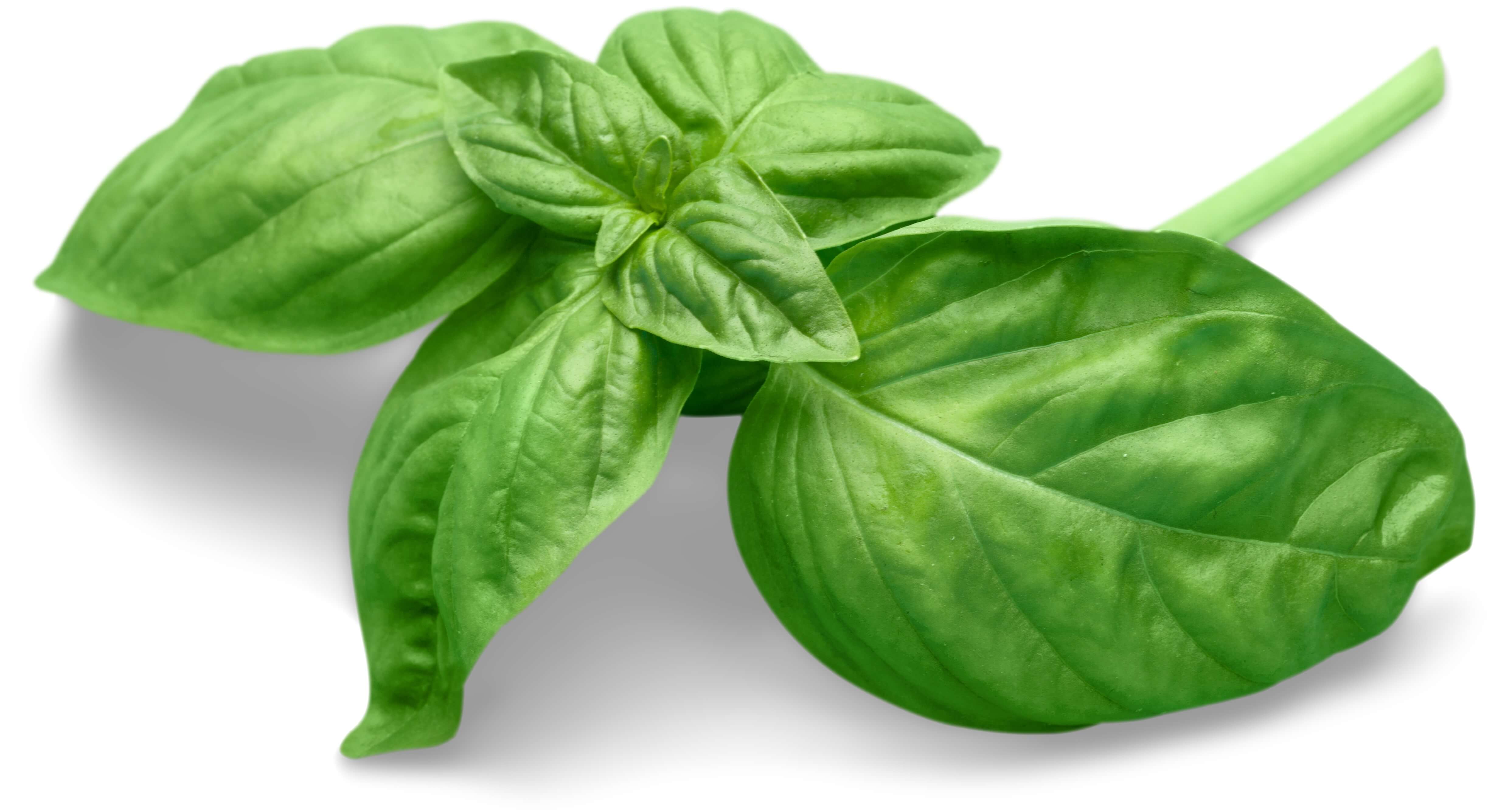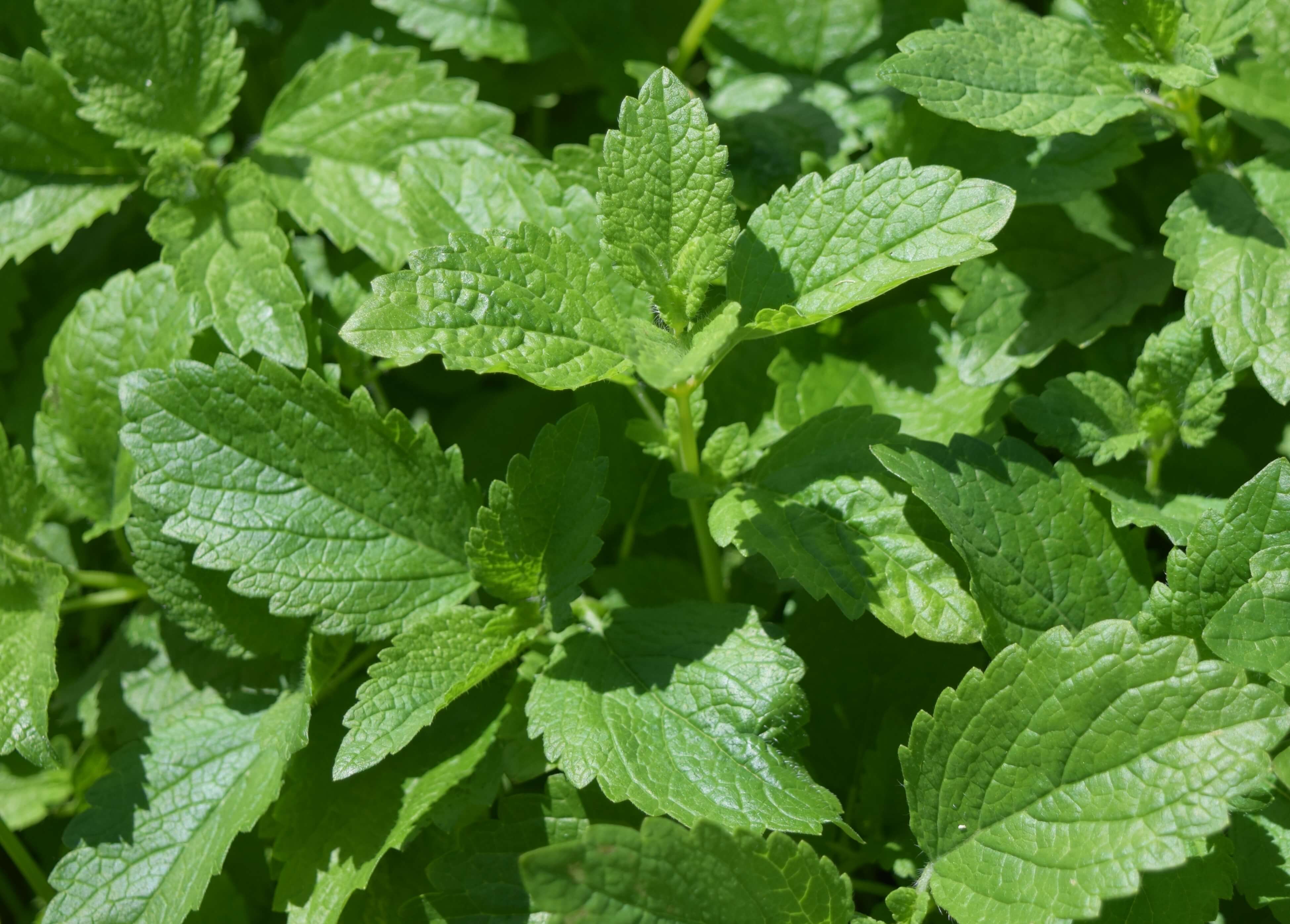Herbs are potent healers and add wonderful flavors to a wide range of foods. From salads to soups, stews to desserts, baked goods and all manner of dressings and sauces, herbs can transform the flavors of our food. Eat them for their great taste and they will impart their healing as an added benefit.
A Family of Culinary Herbs
Perhaps most diverse and well used in the kitchen is the family Lamiaceae. Sometimes called the mint or deadnettle family, Lamiaceae contains many more plants than those of the mentha genus, however. Here’s just a short list of a few better known members: rosemary, cumin, sage, savory, thyme, hyssop and, lavender… Even chia seeds, that new darling of the health food industry, is a member of this family!
Fresh is Definitely Best
The modern spice rack has gotten herbs and spices into our kitchens, but it is no match to the powerhouse of fresh picked when it comes to herbs. Certainly dried herbs are better than none, but to get power packed flavor and healing, reach for fresh herbs whenever possible.
The health benefits and taste sensations fresh herbs provide make choosing fresh herbs for food and drinks very much worth your while. And, lest you think the health benefits are just ‘old wives tales’, the cancer and dangerous bacteria fighting power of fresh herbs is gaining more attention and attracting a lot more direct research, too.
In spring and early summer when herbs are abundant in the garden, there’s no better way to dress up a meal, glass of iced tea or create a new cooling beverage sensation. You might even discover a delicious new dessert!
5 Great Choices for Fresh Healing Herbs
Here are five of the easiest and most beneficial herbs to add to your garden, or even a bright window sill. All but one of them are perennials, so only the basil will require new plantings each year. Plant them in locations where they can range a bit without encroaching on other plantings and you will be amply rewarded with their perennial return. They require minimal care and attention in most temperate climates. Sweet marjoram is a tender perennial and may need to come indoors for cold winters, but the rest of them will all come right up out of the ground with new shoots and leaves in early spring.
All of the blooms of these herbs provide excellent food sources for beneficial pollinators in the garden, so be sure to leave at least some of your plantings to go to flower. They will attract solitary and honey bees, bumble bees, predatory wasps, butterflies and many others.
Basil
Basil is a very popular herb and is also an annual, which means it must be replanted each year. Planting heirloom varieties means you can collect seed for next year from your plants. However, it is so easy to grow that this really is not difficult, and it is common enough to be very easy to find in seed or young starts at any local farmers market or garden store. Many grocery stores even sell whole plants.
Basil comes in many forms, from deep purple and slender leaved Greek, to large ‘lettuce’ leaf types, with lots of choices in-between. Most of us know the ‘Genovese’ form as the most common with its large lobed green leaves on thick stemmed stalks. This is often the type sold as whole plants in stores like Trader Joe’s.
Healing Properties
Basil is a healing food as well. It is full of volatile oils which prevent the growth of bacteria including Listeria monocytogenes (a common food born bacteria that can cause severe food poisoning). It has also been proven effective against staphylococcus aureus, and certain strains of E. coli. It therefore makes a great addition to any foods susceptible to contamination (such as chicken in the United States). In addition, basil’s flavonoids protect our cells against damage from radiation and oxidative damage.
In the Kitchen
Basil is a wonderful herb for use in all kinds of fish and chicken dishes. Use it in salads, egg dishes and of course for the making of fresh pesto. On a budget? Use almonds instead of pine nuts for a tasty less expensive pesto. Use pesto to dress up salmon, eggs (especially omelets), pasta, chicken or any mixed vegetable dish. Add a bit of extra oil and use it as a salad dressing.
And if we’re talking basil, then there’s always Bruschetta. You just can’t miss with this delicate and delicious summer treat. Mix rough chopped fresh tomato, basil, some crumbles of feta cheese, olive oil and salt and pepper tossed and set to stand for 30 minutes, then serve over freshly toasted baguette slices – talk about the perfect summer meal!
Looking for a wild side summer dessert? Try making lemon basil ice cream! It sounds a little scary, but trust me when I say it may become your new favorite.
Oregano
Oregano is another herb that is delicious in fresh salads. But start with small amounts, as it has a pungent flavor. Take one or two good sized stems and strip the leaves off the stem by running your fingers against the stem from the top toward the bottom. Chop the larger leaves, but smaller leaves won’t even need chopping. Just toss them into the salad as is.
Healing Properties
Oregano is a major immune system booster and super antioxidant containing the carotinoids cryptoxanthin, lutein and zeaxanthin which protect cells from oxidative damage.
Oregano is a great source of folate, magnesium, calcium and iron. It fights congestion, reduces phlegm in the lungs, improves digestion, and fights the common cold and flu. It has been studied extensively for its excellent antimicrobial, anti-fungal and antibacterial properties, and shown to kill certain forms of foodborne pathogens and even MRSA.
In the Kitchen
You’re probably used to Oregano as a main ingredient in Italian seasoning, but it’s also great on its own. It offers a very unique experience as a fresh herb. It is quite delicious with a sharp cheddar cheese in scrambled eggs. Try it as part of a fresh lettuce and herb salad served with a citrus vinaigrette or a green goddess dressing. We also love it mixed with a few sprigs of mint as garnish on potato salad. For a real treat, tuck a few leaves into your next deli sandwich or fresh Pita veggie wrap.
Sweet Marjoram
Sweet marjoram is a more tender perennial often grown as an annual in colder climates. It is a close cousin of oregano, and in fact, in ancient times, oregano was also known as ‘wild marjoram’. Sweet marjoram is quite distinct in its aroma and flavor. You can fill the garden with its scent simply by brushing its leaves with your fingers.
Healing Properties
Marjoram has a pungent and lovely fragrance which has made it a popular herb for bath soaps, and many skin and hair products. It is soothing to the nervous system, and has anti-spasmodic properties which can help to calm upset stomach, help to stop vomiting and reduce cramps. It has been used for centuries as a tea for these purposes, and as a digestive aid. Aids in regulating the bowel and soothing the stomach.
Marjoram has demonstrated the ability to remove toxic heavy metals from the liver and kidneys of test animals. It has conclusively been proven to reduce arterial plaque and reduce blood pressure in humans, leading to improved cardiovascular health.
Live cancer cells exposed to aqueous marjoram solutions were unable to divide and multiply in laboratory experiments.
In the Kitchen
Dried or fresh marjoram is an excellent herb to use with chicken or fish dishes, and is popular as a mustard, marjoram, and lemon juice glaze on roasted chicken.
Fresh from the garden, use it in herb butters and herb oils. It is an excellent garnish for all kinds of meats, including veal, beef, lamb and roasted poultry. It is also great added to green and root vegetables. It makes an excellent marinade for artichokes, mushrooms or asparagus. Use it as a substitute for oregano in spaghetti and pizza tomato sauces or seafood marinades.
Other Uses
Sweet marjoram also makes an excellent addition to a soaking bath or as an herbal pillow placed beneath a bed pillow for soothing restful sleep.
Melissa
This may be my favorite fresh herb from the garden. Also known as lemon balm, Melissa is a lemon flavored herb which has historically been associated with the honey bee. In fact, the ancient Greek word from which it derives translates as ‘honeybee’. In classic Greek mythology, it was Amalthea’s sister, Melissa who fed the infant god Zeus on honey to nourish him.
As its historical roots imply, it is a favorite plant of the honey bee and wherever it is planted, honey bees will soon arrive.
It is extremely fast growing, and spreads aggressively in some climates. Its woody stems and roots will die back completely over winter but shoot up new leaves and stems in very early spring. Cutting the plants back over the summer will result in many harvests of new green stems and leaves perfect for teas, used fresh or dried for later use. Simple coppicing of the plant can provide continual harvest from spring to late fall. However, some plants should be left uncut and allowed to flower for the bees who will surely appreciate it.
Healing Properties
Lemon balm, like marjoram, is anti-spasmodic. It is soothing to the nervous and digestive systems. It is said to act first on the autonomic nervous system and to be supportive of the interface between the digestive and the nervous systems.
It has an exceptionally long history as a healing plant for relieving stress, anxiety and combating infection and the spread of disease. One of the few herbs that is truly anti-viral, it has been used successfully in the treatment of certain viruses, including both forms of herpes virus, which are the cause of cold sores, and of chicken pox and shingles.
In the Kitchen
Melissa makes a delicious and healing tea, which acts as an overall tonic to the body and can be taken daily with no ill effect. It is an excellent salad ingredient and works well with lamb, shellfish, fish and poultry dishes. Use it with other lemon herbs (lemon thyme, lemon basil) to make lemon vinaigrette. It is delicious with broccoli, asparagus and with marinated greens. Add it to fresh greens, green juices and smoothies for an uplifting flavor.
Melissa’s lemon flavor makes it a great choice for making sauces for fish and chicken. Use it as a garnish on fresh grilled fish, or fill the inner cavity of a roasting chicken with it to infuse the chicken with a mild lemon flavor. Minced fine, it makes a great flavoring for meat and fish sauces.
Mint
The most well known in the Menthe botanical genus, mint, or peppermint, is so hardy and easy to grow that it is considered a true invasive by some.
Mint has been cultivated and used in healing and culinary arts dating back to ancient Greece and Rome. It has been found in Egyptian tombs, and was included in rituals used by ancient Assyrians to invoke their fire god.
Mint has been used historically for flavoring sauces and wines, meat dishes, marking crowns to be worn by noblemen. Dried mint powder was used in the middle ages to whiten teeth.
These earlier mints are the forefathers of our mint plants today. The two mints most commonly used in food today are spearmint and peppermint.
Spearmint is most commonly used in culinary preparations, having a pleasant taste and scent which adds brightness to dishes. It is considered a more pleasing flavor and not as potent in its medicinal properties as peppermint and is more often used in remedies designed for children. Perhaps best known for its use in cool drinks in summer, a mint iced tea is most commonly made using spearmint leaves, freshly picked and still on the stem.
Healing Properties
Mints are interesting for their ability to hybridize in the wild. Peppermint, for instance, was first identified in 1669 as a natural cross between water mint and spearmint. In 1721 it was admitted to the London Pharmacopoceia, which makes it a fairly new plant in herbology. Peppermint oil was considered the first important essential oil in the famous Grieves Modern Herbal Companion of 1931.
The medicinal qualities of mint are derived primarily from its menthol content. This is the modern derivation of the plant genus, menthe.
Itis well known for its healing properties, include soothing the stomach, calming of hiccups, gas and bloating. Studies have shown that peppermint has the ability to relieve symptoms of IBS. It is considered an all around digestive tonic, soothing the smooth muscles which surround the digestive tract.
Peppermint’s rosmarinic acid content has been shown to relieve symptoms of asthma and to open airways, while blocking the production of inflammation producing chemicals in the body. Like oregano and marjoram, mint has anti-bacterial properties and essential oil of peppermint can be effective against food born pathogens and bacteria such as salmonella and Methicillin-resistant Staphylococcus aureus (MRSA)..
In the Kitchen
Add spearmint or peppermint to fresh green salads and fruit salads. Dice the leaves fine and add them just before serving to your stews and soups. Mint is especially pleasing when paired with citrus, apple, poultry and meats. Mint jelly is commonly paired with lamb.
For a special summer treat, freeze fresh mint leaves in ice cube trays and use in summer drinks. Mint is also exceptional as an ice cream ingredient. Add peppermint or spearmint oil to a basic vanilla ice cream recipe for a cool soothing flavor.
Use mint to brighten up all sorts of salads and slaw. Try adding fresh mint to Asian salad for a nice balance to the ginger and lime. Pair it with cucumbers and fresh greens and a Greek or Middle Eastern dressing for a more exotic flavor experience. Adding mint to cool creamy dressings also brings out different tastes and highlights in salads and tossed cold and pickled vegetable dishes.
Resources:
Oregano, Melissa and Peppermint are all found in the single herb section of Dr. Christopher’s School of Natural Healing. The section is comprised of in-depth theses on individual herbs by graduates of the school.
Another excellent resource for learning about herbs and their healing and culinary uses is Mrs. Grieves Modern Herbal Companion the entire text of the work is available online.
One of the best online resources for the latest modern science on healthy foods, including herbs is Worlds Healthiest Foods Top 100 List.

![By Daniel J. Layton (Own work) [GFDL (http://www.gnu.org/copyleft/fdl.html) or CC BY-SA 4.0-3.0-2.5-2.0-1.0 (http://creativecommons.org/licenses/by-sa/4.0-3.0-2.5-2.0-1.0)], via Wikimedia Commons](https://sustainableyum.com/wp-content/uploads/2016/07/Lamium_purpureum_jamestown1-e1468367153771.jpg)






Leave A Comment